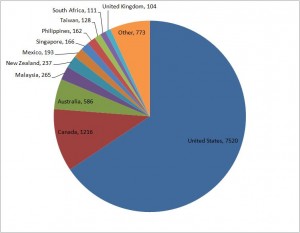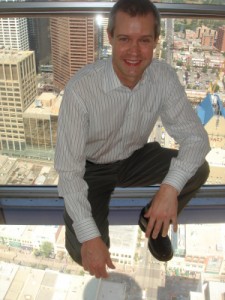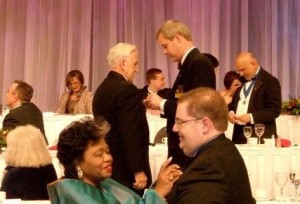Yes, it’s that time already! Just got back from the first one, District 11 (Indiana and northern Kentucky), and it was a good visit. This was the first district I visited last year during my campaigning (and also the first district conference I’d ever attended outside my own district!).
I drove down on Thursday evening after work (from Chicago) for dinner with the group, and on Friday, we had two marketing visits, one with a casino and one with a bank. We were early for the casino meeting, so we spent a few minutes becoming more familiar with their product. There were quite a few people gambling at 8:30 AM on a Friday.
The district presented their annual C&L award to Thomas Carroll, President and CEO of Lakeshore Public Television, the northwest Indiana public television station (PBS). D11 has a very interesting membership promotion based on a football theme; you earn yards and points based on club activity, bringing in guests and sponsoring members, etc. It’s generating some great excitement — District 11 has some real fire in their eyes and will surely be distinguished this year!
Unfortunately, I have been suffering from a pretty bad cold the last few days, I almost lost my voice, but fortunately, it wasn’t until after I had conducted my afternoon educational session on “The Courage to Conquer: The Four Critical Success Factors”. My meeting with the district leaders afterwards basically consisted of me listening to them, and croaking out a few words!
This weekend is my home district’s monthly DEC meeting (no official role there), and next weekend is my home district’s conference, so not very far either. Two more in November, D54 (Champaign-Urbana, also close) and D8 (St. Louis).





